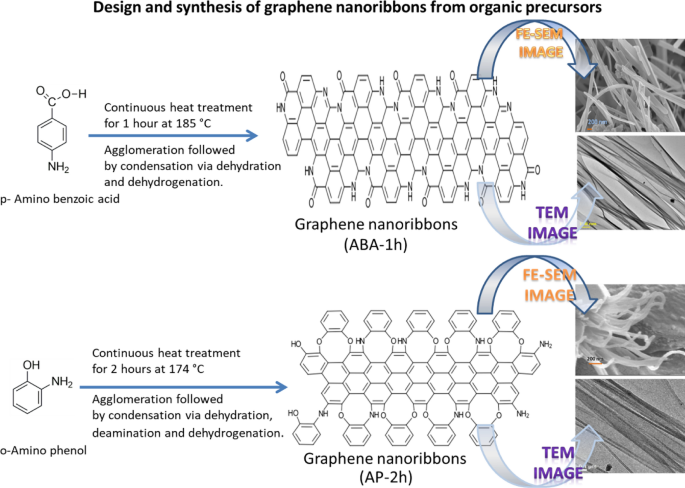Design and synthesis of graphene nanoribbons from organic precursorsRanjit Debnath, Jhuma Debbarma, and Mitali Saha Department of Chemistry, National Institute of Technology Agartala, Agartala, India
E-mail: mitalichem71@gmail.com Received: 2 March 2023 Accepted: 12 September 2023 Abstract: As quasi-one-dimensional subunits of graphene, the high potential of graphene nanoribbons (GNRs) toward electronics and biomedical applications has boosted the research toward their fabrication. The strategies of synthesis with different geometries and edge structures have been investigated by various researchers, where GNRs were either prepared by top-down approaches like lithographical patterning of graphene and unzipping of carbon nanotubes or bottom-up approaches like coupling reactions of organic building blocks, surface-assisted polymerization and conversion of precursors inside nanotubes. In spite of these, bulk production of GNRs with structural uniformity and maintaining appreciable length is still a great challenge for everyone. To overcome these, the designing of organic molecules was carried out for the first time in such a way that functional groups attached at different positions of the aromatic moieties can produce graphene ribbonlike structures. Two aromatic molecules, viz. p-amino benzoic acid and o-amino phenol, were selected and subjected to pyrolysis at a very low temperature (<200 °C), resulting in the formation of nanoribbons. The FE-SEM and TEM images also confirmed the formation of ribbonlike structures, whereas the p-XRD pattern and Raman spectra confirmed the formation of a graphene lattice. The continuous reduction in FTIR peak intensities in the case of final products indicated the participation of –NH2 with –COOH of p-amino benzoic acid and –NH2 with –OH of o-amino phenol in the intermolecular condensation for the production of ribbonlike structures. Thus, the chemistry and mechanism concluded that designing the organic molecules having functional groups at suitable positions in the aromatic ring can lead to the formation of graphene nanoribbons even at low temperatures. Graphical abstract Keywords: p-Amino benzoic acid; o-Amino phenol; Nanoribbons; Pyrolysis Full paper is available at www.springerlink.com. DOI: 10.1007/s11696-023-03081-y
Chemical Papers 78 (1) 295–305 (2024) |
Saturday, April 27, 2024 |
|||
© 2024 Chemical Papers |
||||






